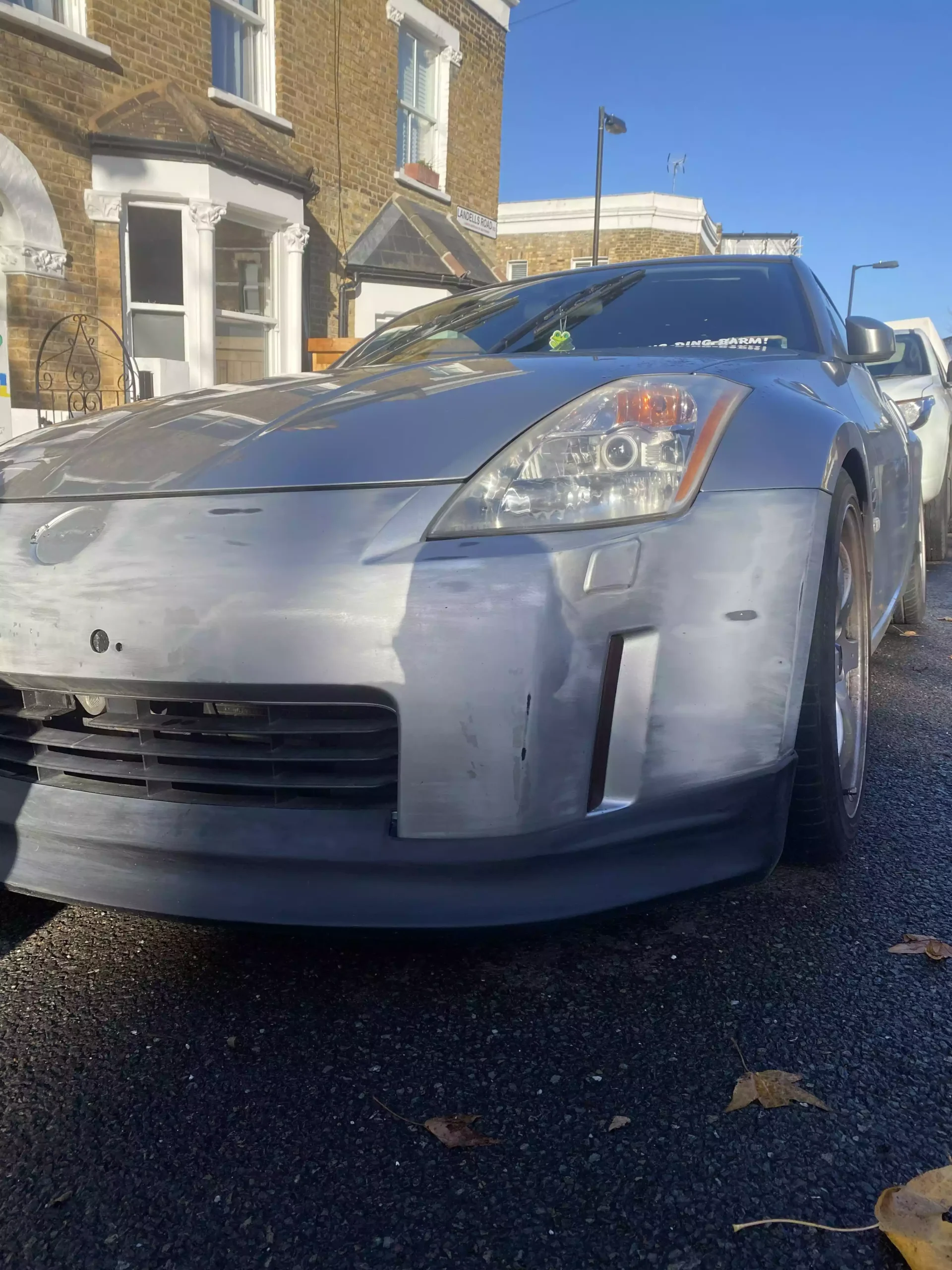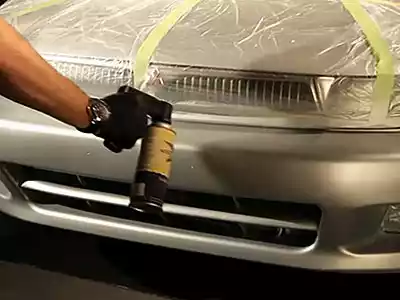Short Answer:
No permit is required for small-scale, non-commercial projects if you follow these rules:
Use low-VOC (water-based) paints (VOC content ≤ 3.5 lbs/gal).
Paint outdoors or in a well-ventilated area (not a garage).
Limit painting to one vehicle bumper (not full-car resprays).
Avoid commercial-grade equipment (e.g., high-volume sprayers).
When You Do Need a Permit:
Using oil-based/high-VOC paints (common in automotive finishes).
Spraying multiple vehicles (considered commercial activity).
Working in an enclosed space without proper filtration.
Check Clark County Air Quality Regulations:
Las Vegas falls under Clark County’s DAQ (Division of Air Quality). Fines for unpermitted VOC emissions start at $500+.
The Most Common Reasons People Turn to DIY Car Bumper Painting
• Cost-Effective: Professional car painting services can be expensive. DIY painting significantly reduces costs.
• Customization: Personalize your car’s appearance with unique colors and finishes.
• Satisfaction: Completing a DIY project can be highly rewarding.
• Learning Experience: Gain new skills and knowledge about car maintenance.
How to Spray Paint Legally (No Permit Required)
Step 1: Use Compliant Paint
Low-VOC Options:
Dupli-Color Custom Wrap (water-based, pre-mixed colors).
Rust-Oleum Automotive Low-VOC Primer (3.2 lbs/gal VOC).
Avoid: Oil-based enamels, urethanes, or 2K clears (high VOC).
Step 2: Prep Safely
Ventilation: Paint outdoors on a calm day (wind < 10 mph) to avoid overspray complaints.
Masking: Use plastic sheeting to protect surroundings (overspray on neighbors’ property = liability).
Step 3: Equipment Tips
Use an HVLP spray gun (less overspray, better control).
Avoid airless sprayers (common in pro shops; may trigger permit requirements).
Risks of Skipping Permits
Fines: Up to $10,000 for violating Clark County’s Rule 69 (coating regulations).
Neighbor Complaints: Odors/noise can lead to code enforcement visits.
Environmental Penalties: Improper disposal of paint waste (e.g., dumping thinner) risks fines.
Pro Workarounds (No Permit Needed)
Option 1: Use Pre-Painted Bumper Covers
Buy pre-painted bumper covers from sites like CarParts.com (color-matched to your VIN).
Cost: 200−500 (vs. $100 for DIY paint + risk of fines).
Option 2: Mobile Auto Painting Services
Companies like ColorMasters (LV) offer on-site bumper repairs with compliant equipment.
Cost: ~300−600 (permit included in service).
Option 3: Rent a Booth
Las Vegas Paint Booth Rentals (50−100/hour):
Permitted facilities with ventilation/filtration (e.g., DIY Auto Garage).
Safe Disposal in Las Vegas
Paint Waste: Take leftover paint/thinner to Clark County Household Hazardous Waste Facility.
Location: 3333 E. Washington Ave, Las Vegas.
Free for residents (proof of address required).
The Backstory: Why DIY Car Bumper Painting is Popular
Where It All Began: A Brief History of Car Painting
Car painting has evolved significantly since the early 20th century. Initially, cars were painted by hand using brushes, a method that was both time-consuming and prone to imperfections. The introduction of spray painting in the 1920s revolutionized the industry, allowing for smoother finishes and faster application. Over the decades, advancements in paint technology and equipment have made it possible for car owners to achieve professional-quality results at home.
How It’s Evolved Over Time and Why It’s Relevant Today
The development of aerosol spray cans and portable spray guns has democratized car painting. High-quality automotive paints and primers are now readily available to consumers. This evolution has made DIY car painting a viable option for many, offering a blend of convenience, affordability, and creativity.
What You’ll Notice First About DIY Car Bumper Painting

Initial Observations When Painting Your Car’s Bumper
The first thing you’ll notice is the need for meticulous preparation. This includes cleaning the bumper to remove any dirt, grease, or old paint, and sanding it to create a smooth surface. A controlled environment is crucial to avoid dust and debris from settling on the wet paint, which can ruin the finish.
The Most Common Questions or Concerns People Have
• Do I need a permit to spray paint my car’s bumper at home in Las Vegas?
• What type of paint should I use?
• How can I ensure a smooth, even finish?
• Is it difficult to match the existing color of my car?
• What safety precautions should I take?
| Aspect | DIY Painting | Professional Service |
|---|---|---|
| Cost | Low | High |
| Time | Varies | Quick |
| Quality | Depends on skill | High |
Let’s Break It Down: The Steps to Paint Your Car’s Bumper
Preparing Your Workspace and Bumper
Preparation is Key: The success of your DIY painting project hinges on thorough preparation. Start by washing the bumper with soap and water to remove any surface contaminants. Once dry, sand the bumper using fine-grit sandpaper to create a smooth, even surface. This step is crucial for ensuring the paint adheres properly.
Materials Needed:
– Soap and water
– Fine-grit sandpaper
– Automotive primer
– Automotive spray paint
– Clear coat
– Masking tape and paper
Choosing the Right Paint and Equipment
Selecting the right materials is essential for achieving a professional finish. Use automotive spray paint and primer specifically designed for cars. These products are formulated to withstand the elements and provide a durable finish. A spray gun can offer more control and a finer mist than aerosol cans, but either can be effective with proper technique.
Real-Life Examples and Practical Applications

How DIY Car Bumper Painting Works in the Real World
Many car enthusiasts have successfully painted their bumpers at home, sharing their experiences and tips online. These real-life examples demonstrate that with patience and attention to detail, you can achieve impressive results.
Here’s What Happened When a DIY Enthusiast Painted Their Bumper
A car owner decided to repaint their bumper after a minor accident. They followed a step-by-step guide, starting with cleaning and sanding the bumper. After applying several coats of primer and paint, they finished with a clear coat. The result was a smooth, glossy finish that matched the rest of the car perfectly.
| Step | DIY Example | Outcome |
|---|---|---|
| Preparation | Cleaned and sanded bumper | Ready for painting |
| Painting | Applied primer and paint | Even, smooth finish |
| Finishing | Applied clear coat | Glossy, professional look |
Common Fixes and Things You Can Do
Easy Fixes You Can Try First, Without Needing an Expert
• Addressing Paint Runs: If you notice paint runs, wait for the paint to dry, then sand the area smooth and reapply paint.
• Fixing Uneven Coats: Apply additional layers of paint as needed, ensuring each layer is dry before adding the next.
What Experts Say: Quotes and Insights
“Preparation is key to a successful paint job. Take your time with cleaning and sanding.” – Auto Body Expert
When Things Don’t Go as Expected
How to Spot When Something Isn’t Right
• Uneven Paint Coverage: Visible streaks or patches indicate uneven application.
• Paint Peeling or Bubbling: This usually means the surface wasn’t properly prepared or the paint was applied in unsuitable conditions.
Common Mistakes to Avoid
• Skipping the Primer: Primer helps the paint adhere better and provides a smoother finish.
• Painting in a Dusty or Windy Environment: Dust and debris can settle on the wet paint, causing imperfections.
| Problem | Solution |
|---|---|
| Paint runs | Sand and reapply paint |
| Uneven coverage | Apply additional layers |
| Peeling paint | Ensure proper surface preparation |
Your Best Options or Alternatives
If DIY Painting Isn’t for You, Here’s What to Consider Instead
• Professional Car Painting Services: While more expensive, this option guarantees a high-quality finish.
• Pre-Painted Bumper Replacements: These can be ordered to match your car’s color and are easy to install.
| Option | Pros | Cons |
|---|---|---|
| Professional Service | High quality, quick | Expensive |
| Pre-painted Bumper | Convenient, easy | Limited color choices |
FAQ Section
Do I need a permit to spray paint my car’s bumper at home in Las Vegas?
In most cases, you don’t need a permit to spray paint your car’s bumper at home in Las Vegas. However, it’s essential to check local regulations to ensure compliance. Some residential areas may have restrictions on using certain types of paint or equipment due to environmental and safety concerns. It’s always a good idea to consult with your local municipality or homeowners association if you’re unsure.
How long will it take to paint my car’s bumper?
The entire process, including preparation, painting, and drying time, can take several days. Preparation alone can take a few hours, as it involves cleaning, sanding, and masking off areas you don’t want to paint. Each coat of primer, paint, and clear coat needs time to dry, which can vary depending on the weather and humidity. Plan for at least a weekend to complete the project, allowing ample time for each step.
Can I use regular spray paint for my car’s bumper?
Using regular spray paint is not recommended for car bumpers. Automotive spray paint is specially formulated to withstand the elements, including UV rays, rain, and road debris. Regular spray paint may not adhere well to the bumper and can peel or fade quickly. Always use automotive-grade paint and primer to ensure a durable and professional-looking finish.
Is it difficult to match the existing color of my car?
Matching the existing color of your car can be challenging, especially if the paint has faded over time. To achieve the best match, use the paint code found on your car’s VIN plate or owner’s manual. Automotive paint suppliers can mix paint to match this code. Test the color on a small, inconspicuous area before painting the entire bumper to ensure it matches well.
What safety precautions should I take when painting my car’s bumper?
Safety is paramount when painting your car’s bumper. Wear a respirator mask to avoid inhaling fumes from the paint and primer. Work in a well-ventilated area, preferably outdoors or in a garage with the door open. Protect your skin by wearing gloves and long sleeves. Keep flammable materials away from your workspace, and always follow the manufacturer’s instructions on the paint and primer cans.
Wrapping It All Up
Final Thoughts or Recommendations on DIY Car Bumper Painting
DIY car bumper painting can be a rewarding and cost-effective project if done correctly. Proper preparation and using the right materials are crucial for achieving a professional look. Take your time with each step, and don’t rush the process.
What You Should Do Next Based on Your Situation
If you’re confident in your skills and have the necessary materials, start your project with thorough preparation. If you’re unsure or prefer a guaranteed result, consider consulting a professional.
References and Further Reading for Those Who Want to Dive Deeper
– DIY Car Painting Guide
– Automotive Paint Types and Uses
This guide aims to provide a comprehensive, humanized approach to painting your car’s bumper at home, addressing common concerns and offering practical advice.
6 MONTH SPRAY PAINT UPDATE- HOW IS IT HOLDING UP?
Posts References:
Is It Legal to Paint Cars at Home? – Your Questions Answered
How Much Does Painting a Car Cost? – CostHelper
Jane Ansems is a highly talented and accomplished spray can artist, known for her intricate, detailed, and thought-provoking works of art. She began her career as a street artist in the early 2010s, quickly gaining recognition for her unique and innovative style.